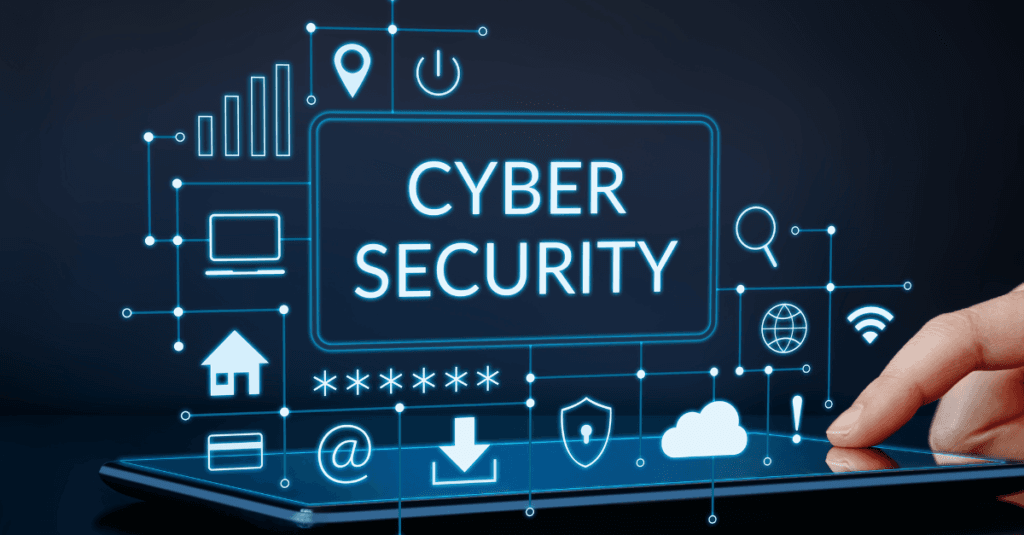Introduction:
What is cybersecurity?
In today’s digital age, cyber security is essential. It includes the strategies and measures put in place to protect not only our computers and networks, but also the invaluable data stored on them. This all-encompassing shield protects against unauthorized access and threats lurking in the vast digital landscape. Cybersecurity is essentially the guardian of our digital realm, preserving the confidentiality, integrity and availability of our data. It is the front line of defense that protects against the myriad of cyber adversaries that seek to threaten the very essence of our digital existence, making it an integral part of personal and organizational data protection and analytics.
Cyber security technology acts as the first line of defense in the digital realm. Protect your organization’s confidential information from unauthorized access, interference or other forms of damage. Cybersecurity technologies include antivirus software, firewalls, encryption, and intrusion detection systems.
Services such as vulnerability management and penetration testing are also important for identifying potential weaknesses in a company’s cybersecurity defenses.

1. Integration of Security by Design:
Security by Design may be a concept that emphasizes the integration of security measures into the plan and improvement of IT frameworks from the exceptionally starting. Instead of being included as an idea in retrospect, the objective of Security by Plan is to guarantee that security gets to be an inalienable portion of the item itself.
Here are a few key points:
- Foundational Integration: Security by Plan points to consolidate security contemplations into each arrange of the advancement handle. From introductory plan and design to coding, testing, and arrangement, security ought to be fundamentally to the system’s advancement lifecycle.
- Proactive Approach: Unlike retroactively including security highlights, Security by Plan guarantees that security isn’t treated as an add-on. Instep, it gets to be an fundamentally portion of the system’s DNA, reducing the chance of vulnerabilities and attacks.
- Comprehensive Strategy: Secure by Plan may be a comprehensive strategy that emphasizes joining security measures right from the beginning of program advancement. By doing so, organizations can provide strong, secure items competent of withstanding different cybersecurity dangers.
2. Protection of Data and Privacy:
Cybersecurity serves as the guardian of confidentiality and privacy. It shields sensitive information from unauthorized access, ensuring that only authorized users can view or modify critical data.
Key aspects include:
- Safeguarding Sensitive Data: In a diverse cybersecurity environment, protecting sensitive data is important. Encryption acts like an impassable fortress, turning important messages into hard-to-break codes. Access control acts as a watchdog that controls who can access and what they can access. Security authentication mechanisms (multi-factor authentication (MFA), biometrics and smart cards) increase data protection.
- Regulatory Compliance: Navigating the labyrinth of data protection laws and regulations is essential. Organizations must honor user privacy rights while adhering to legal obligations. The European Union’s General Data Protection Regulation (GDPR), the California Consumer Privacy Act (CCPA), and other regional laws set the rules. Compliance involves transparency—informing users about data collection, processing, and retention. In the event of a breach, organizations must swiftly notify affected individuals. Transparency here is not just a legal requirement; it’s an ethical imperative. Data retention policies play a crucial role. Organizations must define how long they retain data, balancing legal mandates with business needs. Proper disposal of data ensures that no digital remnants linger beyond their purpose.
3. Threat Detection and Incident Response:
Effective cybersecurity involves detecting and responding to threats promptly.
Here’s how it plays out:
- Threat Detection: Intrusion detection systems (IDS) play a vital role in the world of digital security. They regularly monitor networks and systems to detect signs of unauthorized access, suspicious behavior or malicious activity. When something unusual occurs, whether it’s a network connection anomaly or an illegal login attempt, an alert is displayed prompting further investigation. They collect and analyze data from a variety of sources, including logs, network traffic, and physical events. By combining this data, SIEM can identify patterns that may indicate a breach. Instant alerts enable security teams to respond quickly.
- Incident Response: Time is of the essence when events such as data breaches, malware outbreaks, or system intrusions occur. The incident response team will take immediate action to assess the situation and identify affected systems and threats. The main goal is to minimize damage and prevent it from spreading further. Isolating the system prevents the adversary from moving laterally within the network. The ban will have no effect even if the server is infected or the user’s account is closed. This process involves restoring the body to its original state. Backups play an important role in ensuring that data can be recovered without paying ransom or losing important data.
Conclusion:
In summary, cybersecurity is not an isolated function but an integral part of modern IT engineering. Organizations must adopt proactive measures, integrate security from the outset, and educate their teams. By doing so, they fortify their digital infrastructure against evolving cyber threats.


